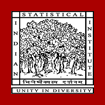HBV quasispecies composition in Lamivudine-failed chronic hepatitis B patients and its influence on virological response to Tenofovir-based rescue therapy
Article Type
Research Article
Publication Title
Scientific Reports
Abstract
The present study sought to evaluate the structure of HBV quasispecies in Lamivudine (LMV)-failed chronic hepatitis B (CHB) patients and its impact in defining the subsequent virological responses to Tenofovir (TDF)-based rescue-therapy. By analyzing HBV clones encompassing reverse transcriptase (RT) and surface (S) region from LMV-failed and treatment-naïve CHB patients, we identified 5 classical and 12 novel substitutions in HBV/RT and 9 substitutions in immune-epitopes of HBV/S that were significantly associated with LMV failure. In silico analysis showed spatial proximity of some of the newly-identified, mutated RT residues to the RT catalytic centre while most S-substitutions caused alteration in epitope hydrophobicity. TDF administration resulted in virological response in 60% of LMV-failed patients at 24-week but non-response in 40% of patients even after 48-weeks. Significantly high frequencies of 6 S-substitutions and one novel RT-substitution, rtH124N with 6.5-fold-reduced susceptibility to TDF in vitro, were noted at baseline in TDF non-responders than responders. Follow-up studies depicted greater evolutionary drift of HBV quasispecies and significant decline in frequencies of 3 RT and 6 S-substitutions in responder-subgroup after 24-week TDF-therapy while most variants persisted in non-responders. Thus, we identified the HBV-RT/S variants that could potentially predict unfavorable response to LMV/TDF-therapy and impede immune-mediated viral clearance.
DOI
10.1038/srep44742
Publication Date
3-17-2017
Recommended Citation
Banerjee, Priyanka; Chakraborty, Abhijit; Mondal, Rajiv Kumar; Khatun, Mousumi; Datta, Somenath; Das, Kausik; Pandit, Pratap; Mukherjee, Souvik; Banerjee, Soma; Ghosh, Saurabh; Chakrabarti, Saikat; Chowdhury, Abhijit; and Datta, Simanti, "HBV quasispecies composition in Lamivudine-failed chronic hepatitis B patients and its influence on virological response to Tenofovir-based rescue therapy" (2017). Journal Articles. 2642.
https://digitalcommons.isical.ac.in/journal-articles/2642



Comments
Open Access, Gold, Green